Back in June Withings announced two new WiFi scales, though only one of them really got any attention – the new Body Cardio scale. I wrote up a bit of a preview post back then, but needed more time to see how this higher end scale performed over time, and whether it was worth it.
Of course, Withings is hardly new to the WiFi scale game. In fact, they were the first to the game 7 years ago in June 2009. It’s only logical that after some additional entrants this year (Garmin, Under Armour – coming up alongside Fitbit) that that they’d take another crack at the market with a new higher end option.
Before we get too far – to be clear Withings sent over both scales for me to try out (Body & Body Cardio). But as usual I’ll send them back to them across town once I’m done with this review, then go out and get them myself through normal retail channels. The whole leave no footprints thing. But you can support the site using the links below or on the sidebar, be it for purchasing the scales or just laundry detergent from Amazon. Whatever floats your boat.
With that – let’s dive into things!
Unboxing:
I’ve got both the Withings Body Cardio and Withings Body Scales, but we’ll start with the Withings Body Cardio unboxing first.
After you remove the outer shell, you’ll be here:
Then, one step further has you are removing exactly three things inside: The Scale, a micro-USB charging cable, and a piece of paper explaining how to use the scale:
That’s it, unboxing complete. Though, we’ll quickly take a slightly closer look at the Body Cardio. Along the side you’ve got a button to power it on. Though that’s really only needed for troubleshooting/setup, since just standing on the scale will turn it on.
And next to that button is the micro-USB port for charging the scale, which you’ll basically have to do once per year or so.
You’ll notice if you flip the scale over there are no feet on it (which is incredibly unusual for a scale). Rather, it sits flat on the ground and can be used on either hard surfaces (wood/tile/etc…) or carpet. I’ve actually moved it back and forth between the two surfaces once right after another and didn’t see any differences in weight.
Meanwhile, over on the regular Body scale (the cheaper one), we’re just going to swing through this super quick, since it’s basically like three things in the box: Scale, feet, and paper. That’s it.
Thus, gallery time:
Well, I also did that because I took these photos in bad light, so they aren’t my favs. Thus the gallery is the equivalent of a music video montage.
The Differences:
So before we get too far along, I should clarify what exactly the differences are between the Withings Body scale and the Withings Body Cardio Scale. After all, they’re some $50 difference in price.
Here’s the distilled differences between the two models:
– Body Cardio has a feetless design good for both carpet and hardwood (Body has small feet included in box)
– Body Cardio has a rechargeable USB design, as opposed to AAA batteries like Body
– Body Cardio has significantly more sensors, enabling more advanced metrics
– Body Cardio can measure heart rate, Body cannot
– Body Cardio can measure Pulse Wave Velocity, Body cannot
– Body Cardio is slightly thinner
So essentially you’re getting higher end metrics of Heart Rate, Pulse Wave Velocity, a rechargeable battery (instead of AAA batteries), and a feet-less design. That’s it.
You can see below if you look at the two scales that there are differences in the sensor layouts. On the Body, the sensors used to measure both weight as well as electrical impedance for body fat are in four squares (the outline is seen atop the scale). Whereas in the Body Cardio scale, each of those stripes is actually a different sensor strip, giving it significantly more sensor readers.
Also, as I noted earlier, there is a slight height difference between the two scales, though I can’t think of any single case where that’d matter.
The ‘new’ Withings Body scale is basically the good ol’ existing Withings WiFi scale, just rebranded and the internal metrics tweaked. For example, they yanked away the room CO2/Temperature monitoring previously found on the Withings WS-50 WiFi scale. also, the current retail price got a slight bump (up). However, I expect that’s more of a short-term thing.
Also note that the different scale options make things kinda confusing because they’re named so closely together. But here’s what you’re looking at:
Withings Balance (aka WS-30)
Withings Smart Body Analyzer (aka WS-50)
Withings Body (the new cheaper scale)
Withings Body Cardio (the new expensive scale)
Seriously, there are more words in the English language beyond ‘Body’…I promise!
Finally, Withings has historically had sub-$100 WiFi scale options, and officially on their own page they don’t anymore. But via retailers it sounds like they’ll continue to push their previous generation scales for sub-$100 from time to time. So let me be super clear: If you don’t care about questionably useful advanced metrics, these existing scales (i.e. WS-30/WS-50) are still among the best WiFi scales out there. Period, full stop.
The Basics:
I’m going to talk about the two scales and how they work from a basics standpoint. You’ll see pictures from both the Body Cardio and Body scales in this section. While they look physically different, the user interface (display) on the scale as well as how you use them is basically identical. The only difference ends up being the somewhat cosmetic in nature (shell design), and of course the Pulse Wave Velocity & Heart Rate, which I’ll talk about in the next section.
So to begin, no matter which scale you’ve got, the first thing you’ll need to do is to get it all paired up to your WiFi network. With the Withings Scales (like other WiFi scales), the transfer of data happens via WiFi. However, the configuration takes place via your smartphone (or desktop computer), via Bluetooth Smart. Thus, you’ll need to grab that to begin:
In the case of the Body Cardio Scale, it’ll come charged more than enough to get going. But if for some weird reason it’s not charged, you can do so via the micro-USB port on the side. Then you can forget about it until next swimsuit season.
Meanwhile, for the Body Scale, you’ll need to yank the tiny little plastic piece out that keeps the batteries from connecting. If you don’t do that, then this setup section will take an exceedingly long time to complete sans-power.
The entire setup process only takes a couple minutes to complete, and involves connecting to your WiFi network as well as setting up a Withings account if you don’t already have one. The Withings account is needed to send your data to, so you can view it on your phone app or their site. Additionally, it allows other platforms to access that (if you authorize them).
Now interestingly, along the way you can also specify your location (or have it automatically pull from the phone). Withings will actually use this within the Body Cardio scale to take the known altitude of that location to compensate for slight pressure differences. Even more interesting is that lacking you doing this manually, they’ll do a reverse look-up on the IP address to try and figure that out using geolocation of IP’s, again, to improve accuracy.
Once all that’s done it’s time to step on the scale and face your…umm…bathroom wall (likely).
When you do so it’ll show your weight, which will fluctuate slightly as you move around the scale before settling on a given number. Once it decides on that number, it’ll flash. The whole process only takes a second or two.
Next, if you’ve got multiple people in the house it’ll ask you to confirm your name. You do this by shifting left/right on the scale to your name. The Withings platform allows you to track 8 people on a given scale.
After this it’ll show your weight trend line for the past few days:
Then the scale will display your body composition metrics: Body Fat % and Water %.
Next, the scale will give you the weather for the day. The idea behind this is that if you’re just waking up and deciding what to wear for the day, that perhaps by making a habit of stepping on the scale you’ll remember that it delivers the weather to you for that day. Thus enabling you to make a fashion related decision. It’s actually kinda logical.
After this the Body Cardio will gather your heart rate data, which requests that you hang out a second and be kinda still. I’ve found that if I move too much, it won’t be able to get a heart rate value.
Finally, you’ll get your bone mass and muscle mass metrics displayed.
On the less expensive Withings Body scale, the order of displayed information is:
1) Weight
2) Name selection
3) Weight Trend
4) Body Fat %
5) Water %
6) Bone Mass
7) Muscle Mass
After all that’s said and done the unit then fades the display off and awaits its next weighty adventure.
Meanwhile, in the background that data was quietly and quickly transmitted to the Withings platform via WiFi, and is now accessible via either the mobile app or desktop site. You’ll see on the homepage the weight listed up top, though, that can be altered by swiping left/right into the different Withings App dashboard areas (Sleep, Steps, Weight, Nutrition, Air Quality). Each of those areas is based on a different Withings product (i.e. Aura for sleep, Activité for Steps, etc…).
As you scroll down through the timeline, you’ll see your latest weigh-ins and metrics from the scale (or other Withings devices, like steps).
I can go ahead and click on any one of those measurements to see more detail. Here’s what happens when I click on the weight – I get a page with the latest weigh-ins, and the ability to click a tab for weight/body composition/BMI.
I can also manually add a measurement in if I need to (such as while traveling from a hotel scale), or change the display options. Also, I can show desired weight (basically a goal), as well as show a simple measurement table:
The measurement table is useful if you somehow get an erroneous measurement in there. For example, in the process of this review I noticed I had a weird 90lbs measurement from November 2011 in there, so I was able to delete that. I think it was actually when I was weighing a box on a scale once and just never deleted it.
Without getting too far off-course, you’ll also see the ability to assign ‘Unknown Measurements’ to a given user. Along with that, you’ll notice that other users can show up in your app (if part of your account), as you see the ‘RA’ and ‘BO’ at the top, which are simply the first two letters of the user names.
Now one metric that is gone from the Body and Body Cardio scales is the Air Quality metric found previously on the WS-50 scale. You used to see that in the Dashboard view, like below:
I wanted to include this in the review, merely to be super-clear that these are no longer supported in the new scales, so that if you for some reason actually wanted these metrics, you shouldn’t get the newer scale. Personally, I haven’t found any real valuable reason to have such metrics, but nonetheless, now you know they aren’t there.
Body Cardio Metrics:
The main reason to pickup the Body Cardio Scale is for the heart rate and Pulse Wave Velocity (PWV) metrics. I’ll start with heart rate, because that’s the easiest to show. With heart rate you’re standing on the scale and it gives you your heart rate while standing:
The theory behind this is to give you ‘resting HR’ (per the exact wording within the app):
I’ve written a massive piece just on resting HR and why it’s interesting in fitness. But the two-line version is that you can use trends in resting HR to identify when you may be fatigued from training, travel, or work. Or when you may be getting sick.
The challenge there is that as I’ve said previously, the Withings method of measuring it while standing goes against every recommendation ever from every health organization ever, on how to measure it. That’s because while standing you cause a huge spike in the value, so much so that the noise from that spikes obscures the actual results.
Ironically, Withings own app does a fantastic job of showing this, even when they didn’t intend to. See, I’ve been using the Withings Aura sleep system, which tracks resting HR. That watch measures resting HR via a sleep sensor under the mattress. While we can debate the accuracy of that, it’s at least in the right ballpark. Thus what you see below is the bottom data points are from the Aura, whereas the upper data points are those from scale. Those points being all over the map. On the right-most screenshot, I’ve selected to overlap the min/max measurements, showing you just how far apart these are:
My Withings Scale HR value swings by so much and so easily, that it’s just too hard to use it for anything other than…well…nothing.
So let’s move onto Pulse Wave Velocity…
Now first, I’m going to re-use the same explanation I did in my initial preview of what PWV is, then I’m going to talk about what I’ve seen and whether it’s valuable or not. At a high level, PWV is “the speed of the wave generated by your heartbeat along your arteries”. Here’s an image that Withings put together:
Withings will take about 15 seconds to measure this value, as it’s timing how long it takes for the blood being ejected by the aorta to reach the vessels in the feet. The slower this happens, the healthier you’re getting. In theory anyway. Note that traditionally measuring this takes at least 20 minutes with a bunch of medical gear. So it remains unclear at this point how accurate the measurement really is, beyond the study Withings did with 111 people. Also, Withings isn’t calling it a medical measurement.
Once the scale measures this, it plots it onto graphs that you can see within the app. Thus allowing you to trend more easily.
So before I talk about my experience with it, is this metric actually meaningful? Well, that’s tough. Most times companies toss in fancy metrics, it’s little more than marketing jazz. Companies in the space do this all the time. The majority of the time there’s absolutely no studies behind it, it’s just thrown out there like someone throwing out ideas for lunch.
However, sometimes companies go one step further. They find some study on a topic somewhere, and decide to try and back their product based on a semi-related study. Then sometimes companies go even further, and they will actually undertake a study of their own (funded by them) to prove their point.
That’s what Withings has done. They had a medical team at a nearby hospital measure 111 people comparing the pulse wave results from the Withings Body Cardio scale to that of a traditional sphygmomanometer. That produces the below chart (to the right), which Withings describes as “good correlation”.
On one hand, one has to remember that Withings paid for this study, the structure, and controlled whether or not the results were released. They also haven’t released the full data from the study to allow more concrete analysis.
Yet on the other hand, they’ve already backed up their claims with a heck of a lot more data than most consumer sports/technology fitness companies do. At least they made an attempt at it. Hopefully some university or other medical facility decides to do a study on their own, without Withings funding, to see if the data can be corroborated.
I’ve uploaded the intro PDF here, and the slightly more detailed pulse wave velocity PDF here. Both are obviously provided by Withings. Note there are a slew of medical study references at the end of the second PDF.
Now one exceptionally odd thing is that the new Pulse Wave Velocity metric isn’t actually shown on the scale, but only on the app afterwards. I can see how it might need to pull data from the backend service to make a determination, but since it does that for steps anyway – it would seem like it could wait a few seconds and then show you that data. After all, that’s why you buy the scale. Odd. Also, it takes about 5 measurements worth of Pulse Wave Velocity before you start getting any trends.
So, how well did it actually work? Well, about 45 days of measurements later I’ve got a reasonable good feel for things. And, I’m not entirely sure it provides much value.
First, you’ll see the Pulse Wave Velocity metrics in both the app and online via graphs. Here it is within the app:
And here it is online via the website:
Again remember that you can’t see PWV on the scale itself, so it requires interacting with another device. Once it’s pulled up you’ll notice that there’s a significant correlation to the heart rate. This is in particular noticeable on July 9th, when I had finished a workout and the scale decided my heart rate was 132BPM. In doing so, it then plotted a ‘not-optimal’ value of PWV:
Now, my heart rate was definitely not 133BPM when I stepped on my scale – but probably around 95-100BPM instead. But you can see it immediately (and incorrectly) impacted PWV. Now perhaps the right thing to do is just to delete that value and call it done. Which, ok, I could do easily as it totally skews my numbers.
But if we remove that metric, what we notice is that basically it doesn’t much change. My PWV basically stays in the same ~7 m/s range for the last 45 days. Of course my weight has also stayed within the same couple pound range – so perhaps that’s to be expected.
I guess my challenge isn’t so much on whether the metric is right or wrong. It’s just whether it’s useful. For me as someone in reasonably good shape, I just see no value in it. However, if you’re shifting your fitness levels, then it may be a better trend indicator. But it’s just hard for me to see that it’d be any better than simply weight. After all at the end of the day your true weight (and to a lesser degree body fat) is ultimately what’s going to drive whether most of us feel better about our body after doing a bunch of hard work exercising.
3rd Party Integration:
When the Withings WiFi Scale first hit the market 7 years ago, from the very beginning integration with 3rd party platforms was a key feature. It was not only the first WiFi scale on the market, but also the first to allow 3rd party platforms to tie into it. Heck, you can even connect your Withings Scale to Fitbit (who also makes a scale), along with platforms like MapMyFitness and numerous others.
There are some 108 different connected partners of Withings today, by far one of the largest (if not these largest) of the scale vendors. The only one who may be larger in partnerships is the new Under Armour scale, since they own MapMyFitness. Not that it matters too much, since both platforms connect to just about any other platform you want.
I bring up this connected point because I think it’s a core decider when comparing something like the Withings, Fitbit, and Under Armour scales to that of Garmin and Polar’s connected scales. Neither Garmin or Polar allow you to sync your weight elsewhere, except for MyFitnessPal in the case of Garmin. That’s it.
However, that starts to get to the core of my recommendation for buying a connected scale: Buy whatever scale company you use for your other devices. If you have a Fitbit GPS watch, buy a Fitbit Scale. If you have a Withings activity tracker, buy a Withings Scale.
When it comes to Garmin, it’s a bit trickier. There are some half-ass ways to get Withings & Fitbit data to sync to Garmin Connect, but it often breaks and only includes the baseline weight data (none of the advanced stuff). So if you want any of the advanced metrics in Garmin Connect you’ll have to buy a Garmin scale. And if you want it to work every day all the time with Garmin Connect, you’ll also have to buy a Garmin scale.
But if you don’t have a Garmin device? Then I’d strongly look at Withings or Fitbit, since they integrate with the most companies and are the cheapest options.
Comparison Tool:
Starting with this review I’ve added a new section to the product comparison tool, which allows you to compare WiFi weight scales. For now I’m just focused on WiFi weight scales for all the reasons I outlined in my previous post on the matter here.
In order to help you compare features, I’ve added in all the mainstream WiFi weight scales to the database. But to keep things kinda simple for this post in the chart below, I’ve narrowed it down to the two Withings Scales, the Fitbit scale, and the Garmin scale. But fear not – you can mix and match your own comparison chart using the database here.
| Function/Feature | Withings Body WiFi Scale | Withings/Nokia Health Body Cardio WiFI Scale | Fitbit Aria WiFi Weight Scale | Garmin Index WiFi Scale |
|---|---|---|---|---|
| Copyright DC Rainmaker - Updated November 20th, 2023 @ 4:28 pm New Window | ||||
| Price | $59 | $149 | $129 | $149 |
| Display Metrics | LBS/KG/STONES | LBS/KG/STONES | LBS/KG/STONES | LBS/KG/STONES |
| Max Weight | 396LBS/180KG | 396LBS/180KG | 350LBS/159KG | 400LBS/181KG |
| Color Options | Black, White | Black, White | Black, White | Black, White |
| Smiley Face Emoticon | No | No | :) | No |
| Maximum users | 8 Users | 8 Users | 8 Users | 16 Users |
| Battery Type | 4xAAA Batteries | RECHARGEABLE USB | 4xAA Batteries | 4xAA Batteries | Data | Withings Body WiFi Scale | Withings/Nokia Health Body Cardio WiFI Scale | Fitbit Aria WiFi Weight Scale | Garmin Index WiFi Scale |
| Weight | Yes | Yes | Yes | Yes |
| Body Fat (%) | Yes | Yes | Yes | Yes |
| Body Max Index (BMI) | Yes | Yes | Yes | Yes |
| Water Percentage/Weight | Yes | Yes | Yes | Yes |
| Bone Percentage/Mass | Yes | Yes | No | Yes |
| Muscle Mass | Yes | Yes | No | Yes |
| Lean Mass | No | No | Yes | No |
| Indoor Air Quality | No | No | No | No |
| Heart Rate | No | Yes | No | No |
| Pulse Wave Velocity | No | Yes | No | No |
| Weather | Yes | Yes | No | No |
| Activity Tracker steps shown | Yes | Yes | No | No | Connectivity | Withings Body WiFi Scale | Withings/Nokia Health Body Cardio WiFI Scale | Fitbit Aria WiFi Weight Scale | Garmin Index WiFi Scale |
| WiFi | Yes | Yes | Yes | Yes |
| Bluetooth Smart | Yes | Yes | Yes | Yes |
| ANT+ | No | No | No | Setup/Config Only | Apps | Withings Body WiFi Scale | Withings/Nokia Health Body Cardio WiFI Scale | Fitbit Aria WiFi Weight Scale | Garmin Index WiFi Scale |
| 3rd Party App API Access | Yes | Yes | Yes | No |
| Mobile Phone App | iOS/Android | iOS/Android | iOS/Android/Windows Phone | iOS/ANDROID/WINDOWS PHONE |
| Can setup with desktop | Yes | Yes | Yes | Yes | Purchase | Withings Body WiFi Scale | Withings/Nokia Health Body Cardio WiFI Scale | Fitbit Aria WiFi Weight Scale | Garmin Index WiFi Scale |
| Amazon | Link | Link | Link | Link | DCRainmaker | Withings Body WiFi Scale | Withings/Nokia Health Body Cardio WiFI Scale | Fitbit Aria WiFi Weight Scale | Garmin Index WiFi Scale |
| Review Link | Link | Link | Link | Link |
Again, remember you can mix and match your own comparison charts here using the database, to show more scales than what I have listed above.
Summary:
While the new Withings Body Cardio scale got all the attention for it’s swanky Pulse Wave Velocity metrics, in reality the new Body scale should have received the real praise. See what went unnoticed is that Withings just demolished the existing price barrier for advanced metrics like muscle mass and bone mass, which are included in the new Body scale at $129. Previously you had to buy more expensive WiFi scales to find those metrics, for example the Garmin Index WiFi scale at $150.
Of course, with any of these metrics dependent on electrical impedance technology they can be variable in terms of accuracy. While I find the measurements relatively consistent day to day, I can’t say that things like body fat is necessarily 100% accurate. After all, it’s the exact same technology that I tested back a few years ago in my three part accuracy testing. In that case I found that while weight was virtually always spot-on, the body fat measurements tended to be all over the map.
Nonetheless, if you’re looking at a WiFi scale, the Withings Body scale gives you plenty of metrics to choose from at a decent price. And perhaps more importantly, they play nice in the sandbox with everyone. What’s not to like about that?
Found This Post Useful? Support The Site!
Hopefully you found this review useful. At the end of the day, I’m an athlete just like you looking for the most detail possible on a new purchase – so my review is written from the standpoint of how I used the device. The reviews generally take a lot of hours to put together, so it’s a fair bit of work (and labor of love). As you probably noticed by looking below, I also take time to answer all the questions posted in the comments – and there’s quite a bit of detail in there as well.
If you're shopping for the Withings Body WiFi Scale or any other accessory items, please consider using the affiliate links below! As an Amazon Associate I earn from qualifying purchases. It doesn’t cost you anything extra, but your purchases help support this website a lot. Even more, if you shop with TPC (The Pro's Closet), you'll save $40 on purchases over $200 with coupon code DCRAIN40! The Pro's Closet has been a long-time partner of the site here - including sponsoring videos like my cargo bike race, as well as just being an awesome Colorado-based company full of good humans. Check them out with the links below and the DCRAIN40 coupon!
And of course – you can always sign-up to be a DCR Supporter! That gets you an ad-free DCR, access to the DCR Quarantine Corner video series packed with behind the scenes tidbits...and it also makes you awesome. And being awesome is what it’s all about!
Thanks for reading! And as always, feel free to post comments or questions in the comments section below, I’ll be happy to try and answer them as quickly as possible. And lastly, if you felt this review was useful – I always appreciate feedback in the comments below. Thanks!


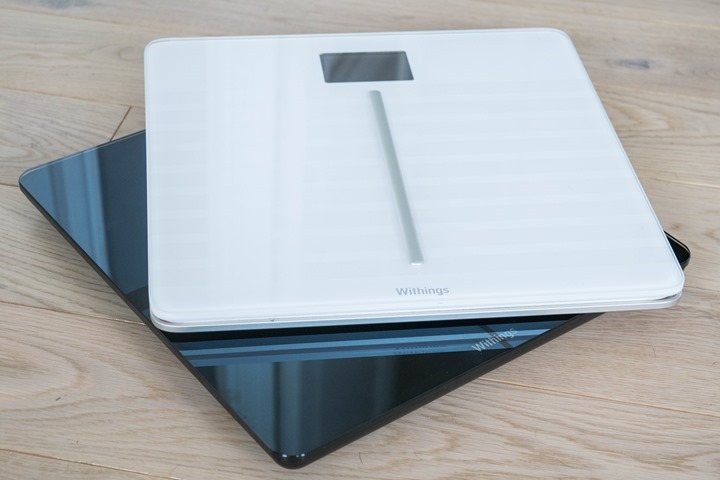
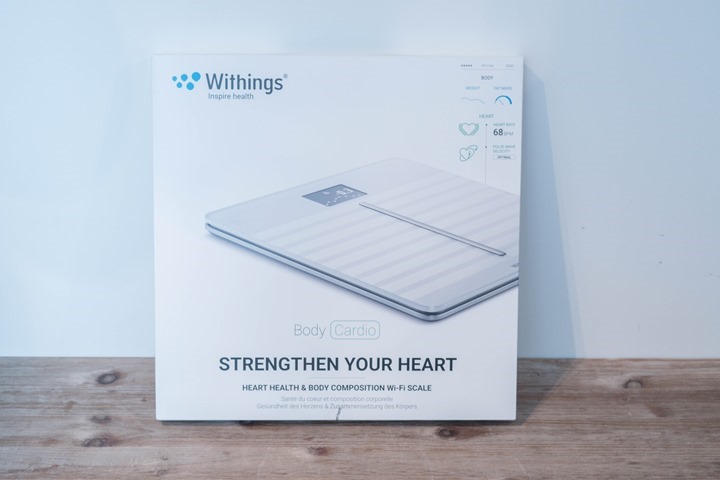
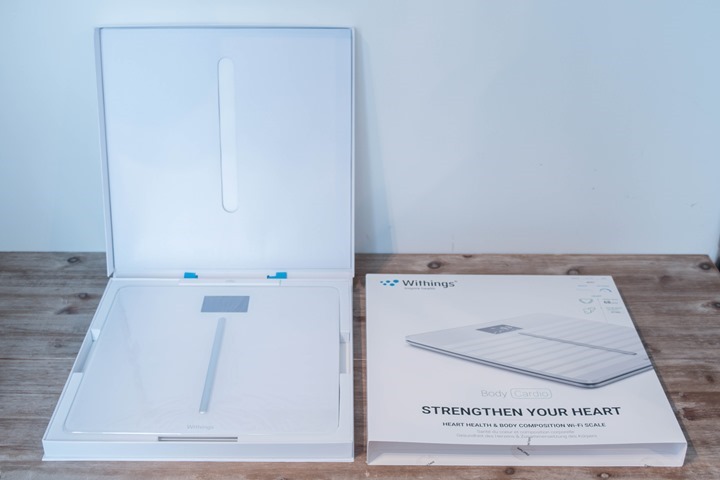
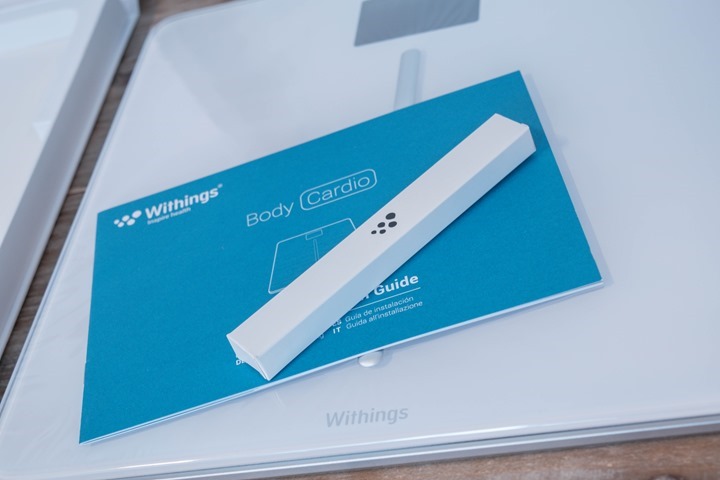
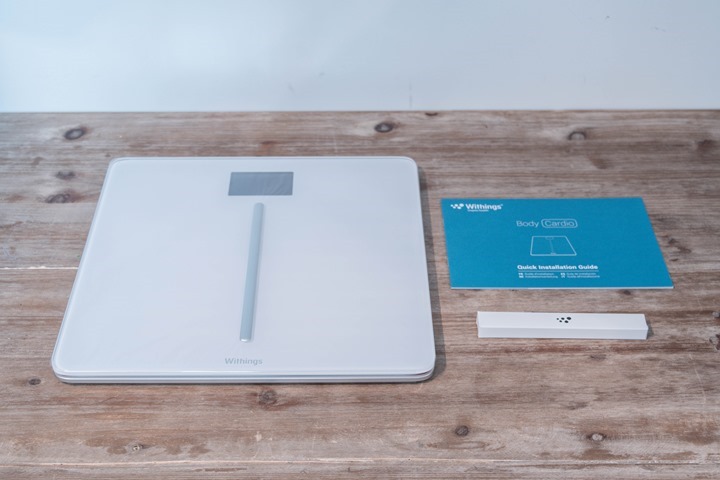
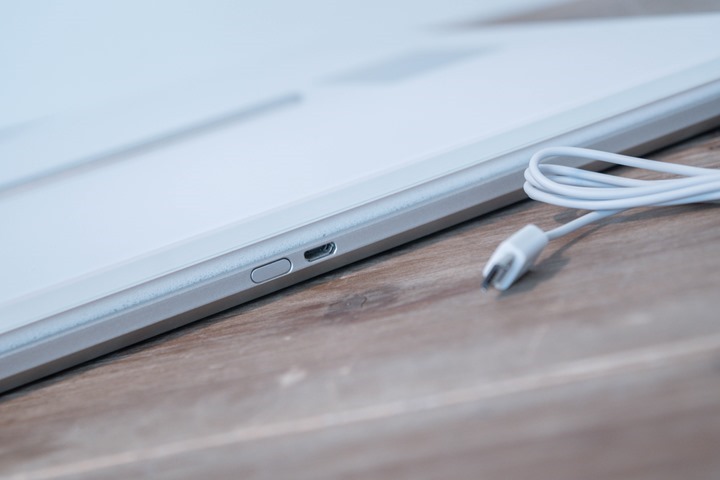
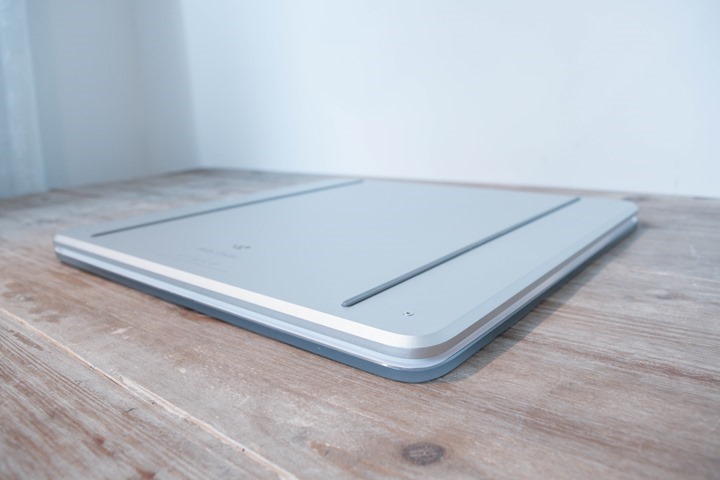
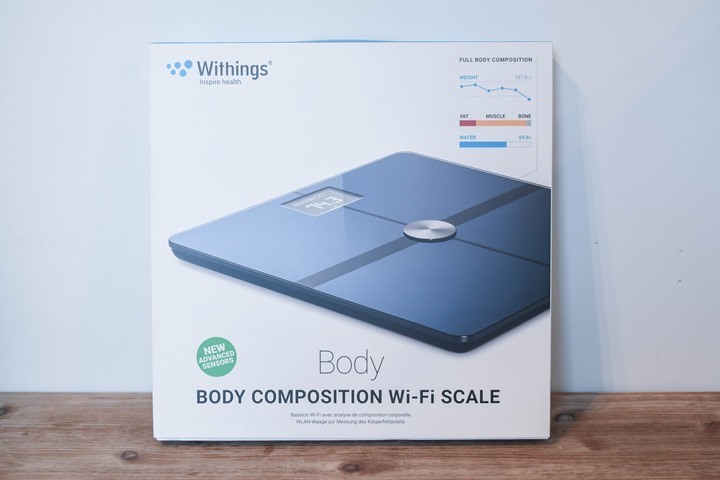
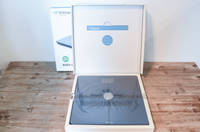
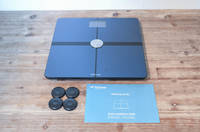
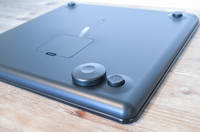
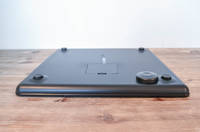
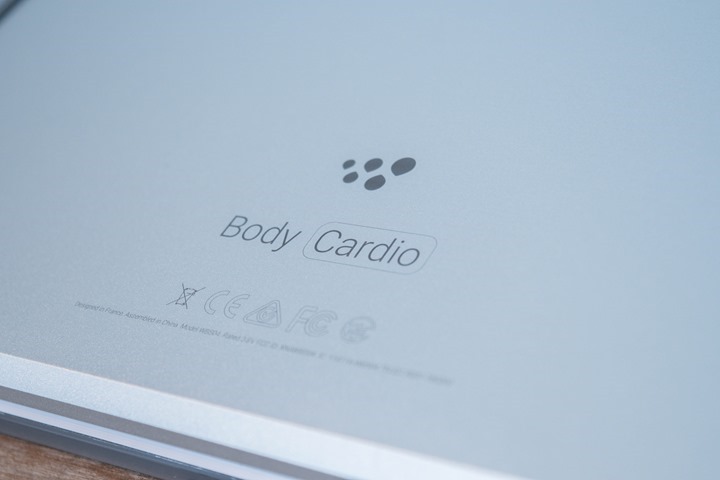
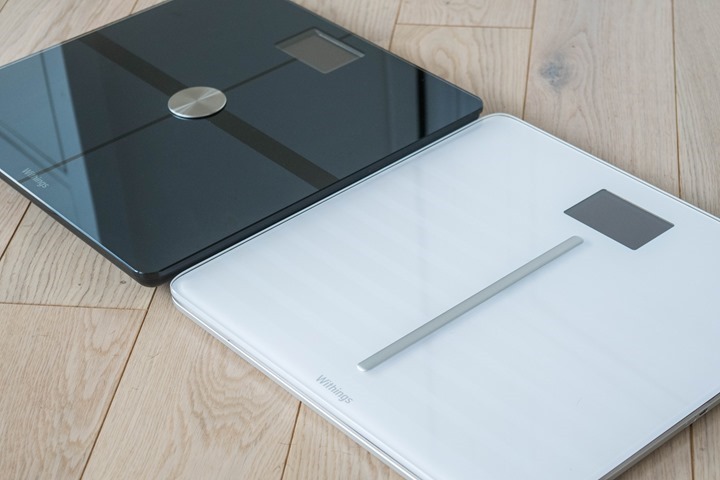
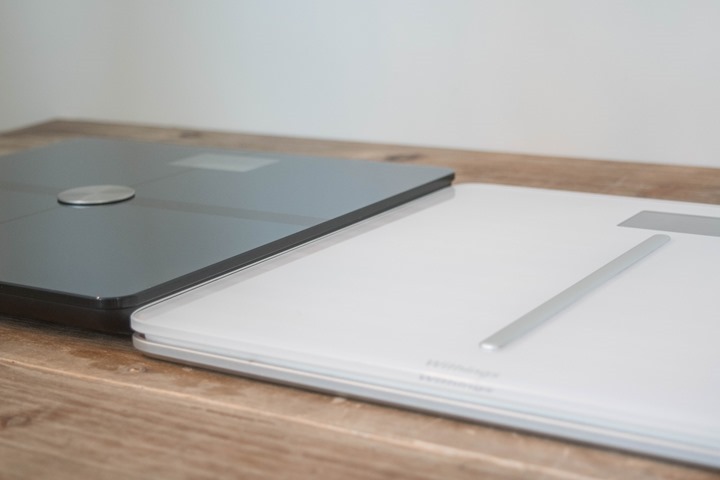

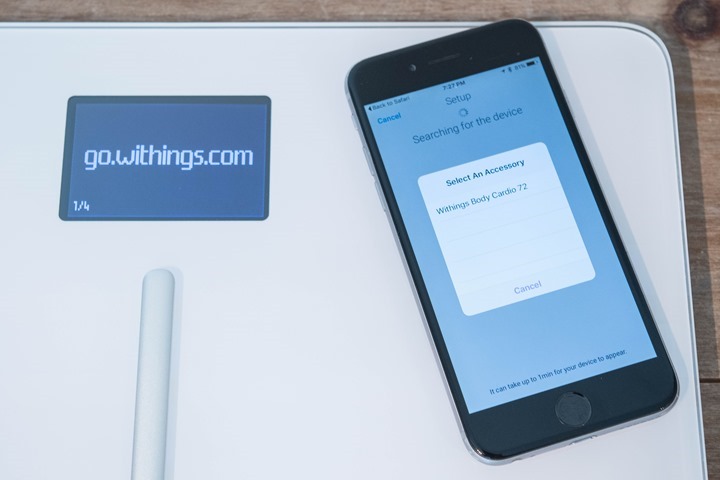
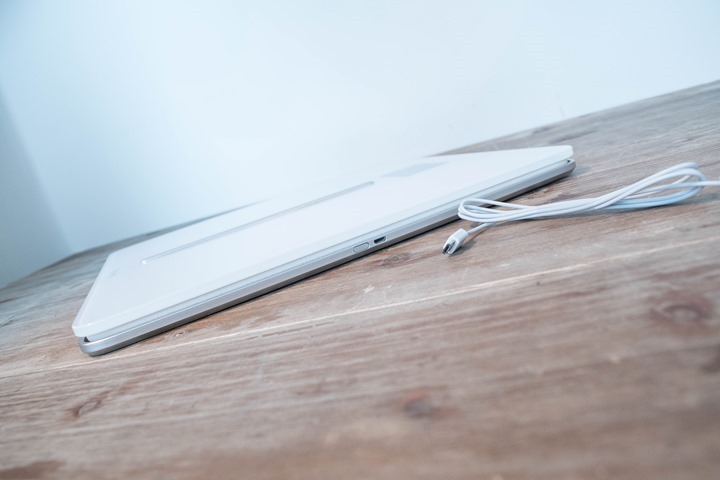
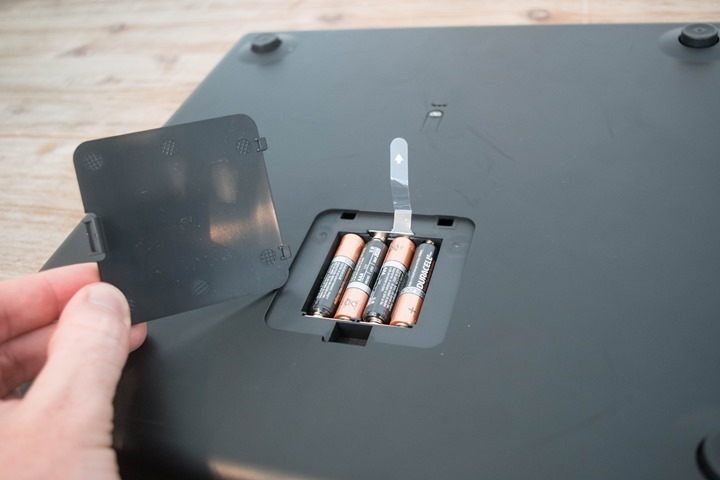
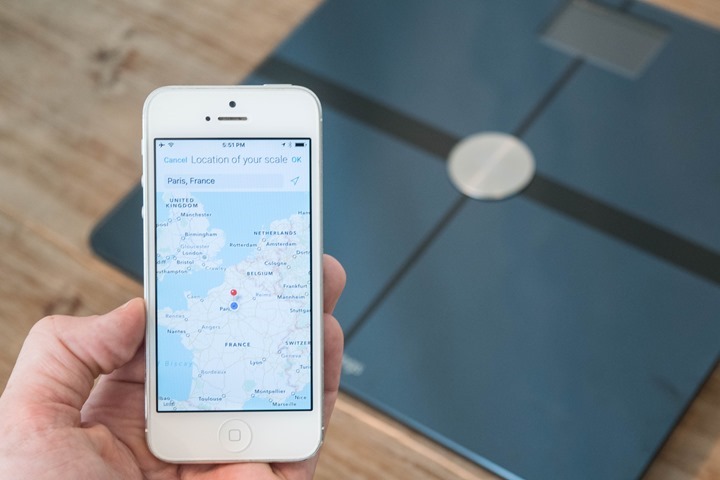
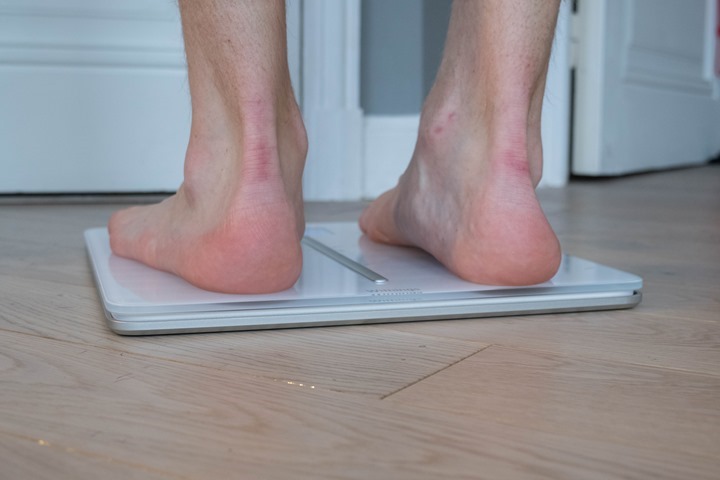
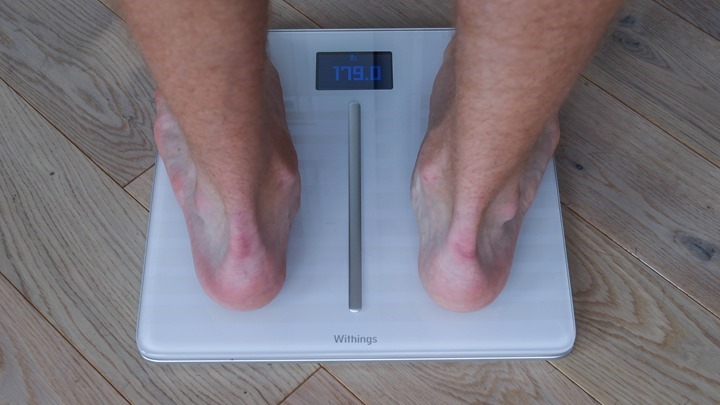
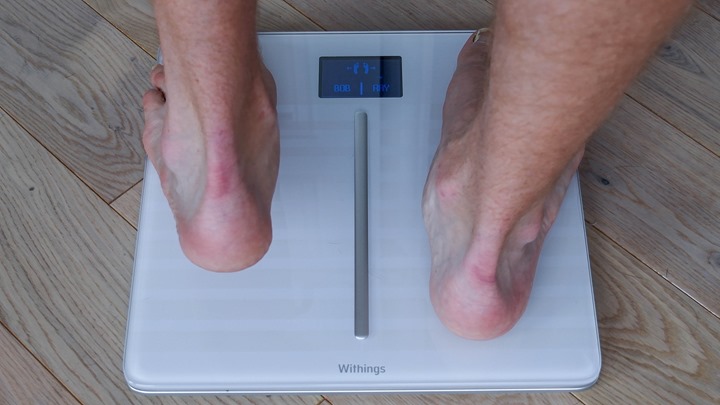
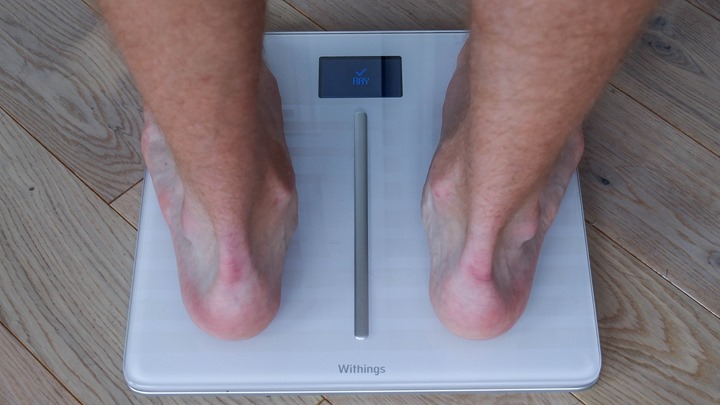
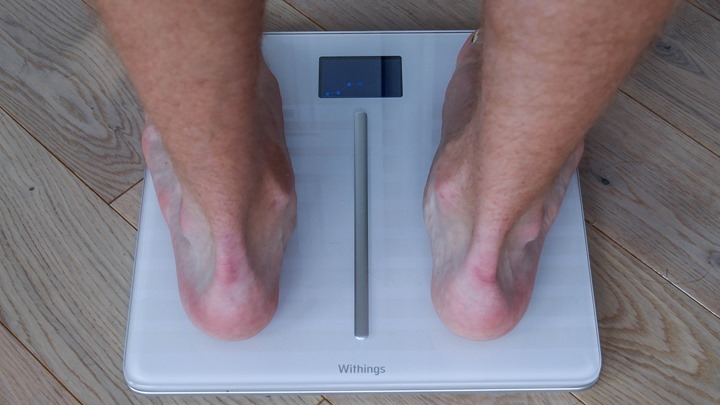
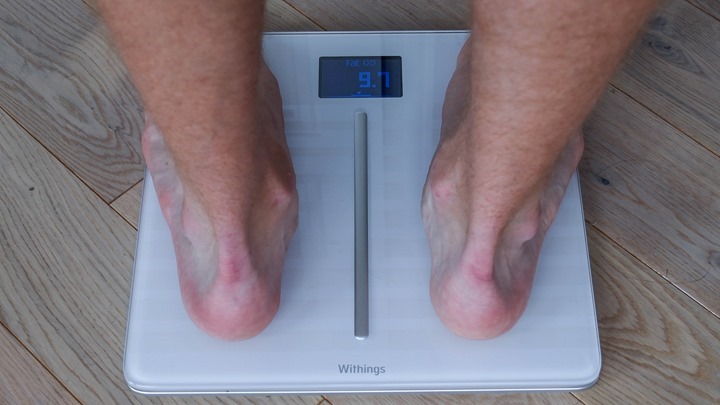
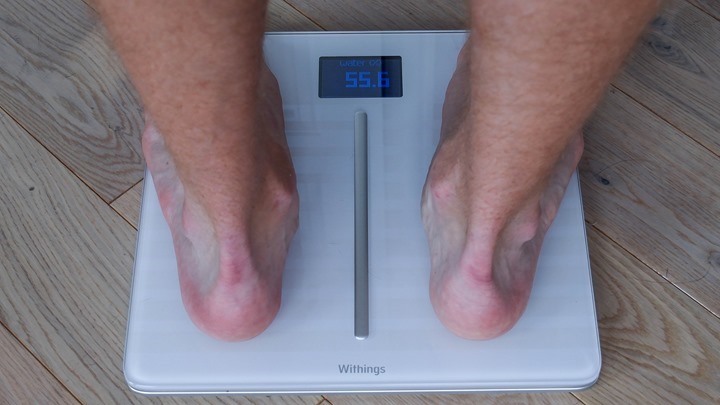
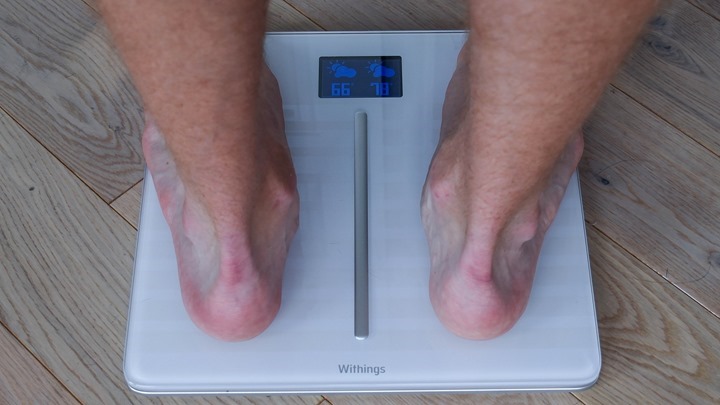
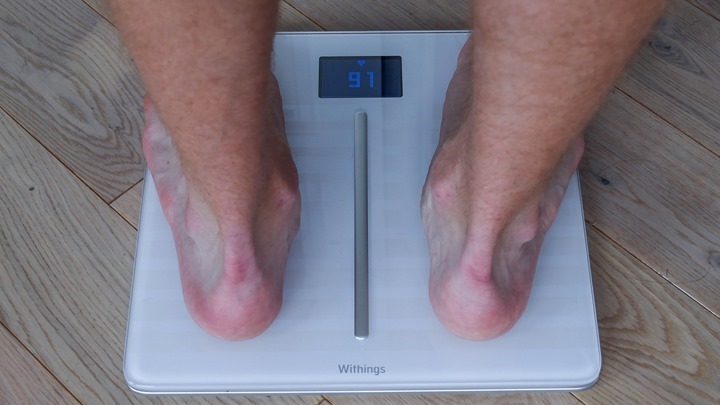
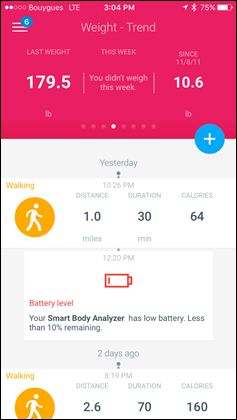
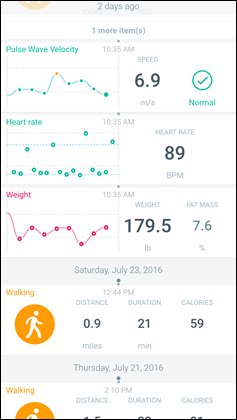
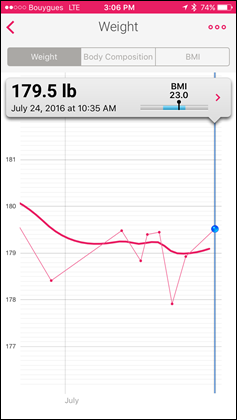
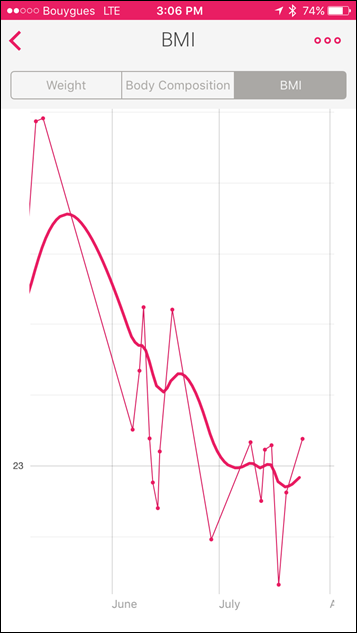
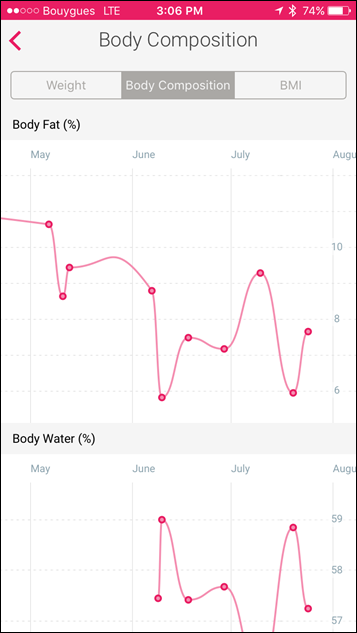
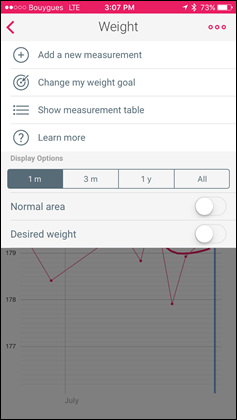
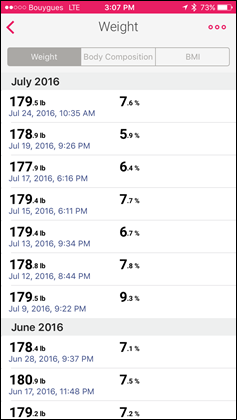
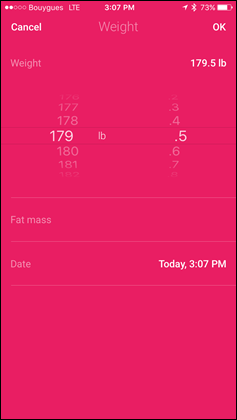
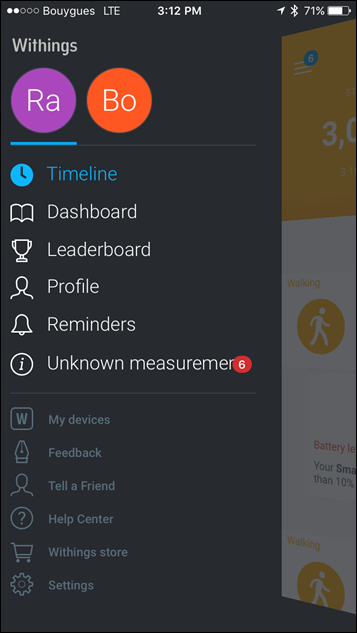
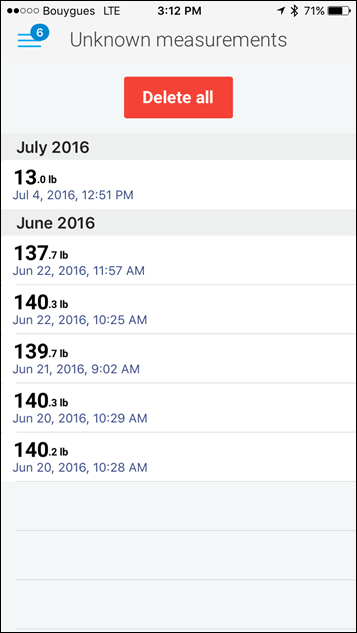
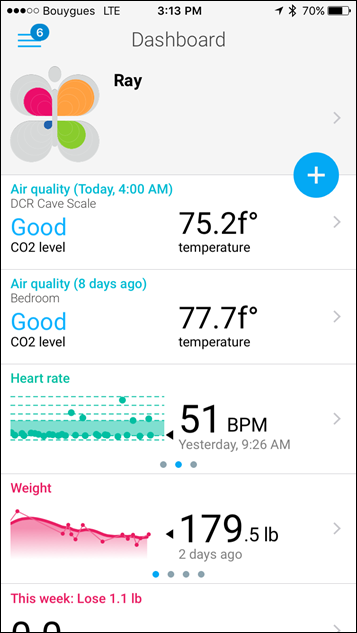
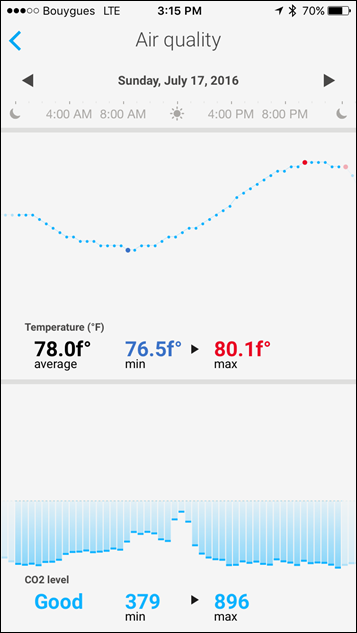

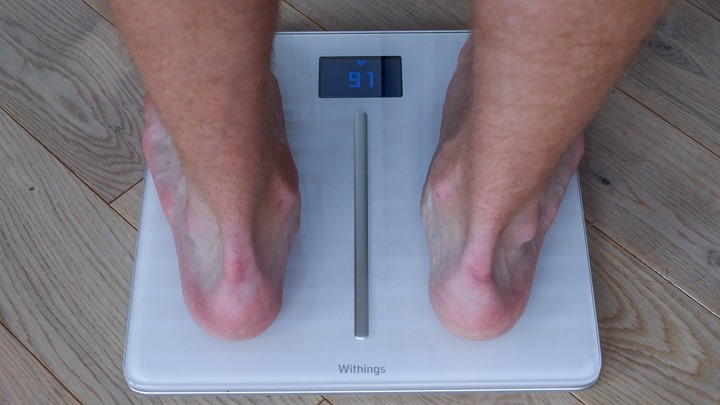
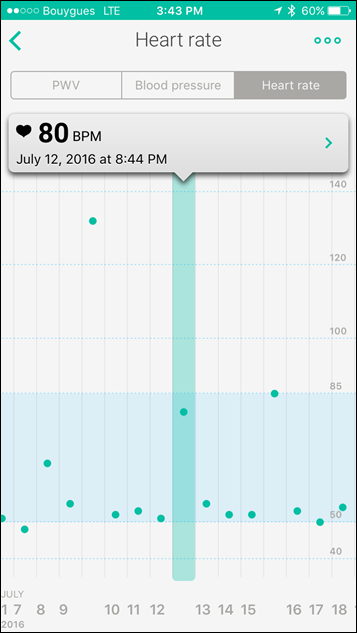
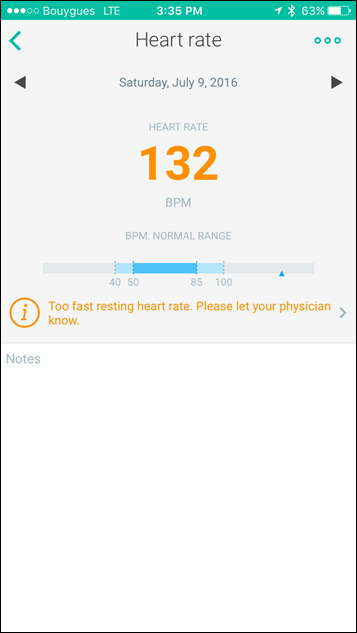
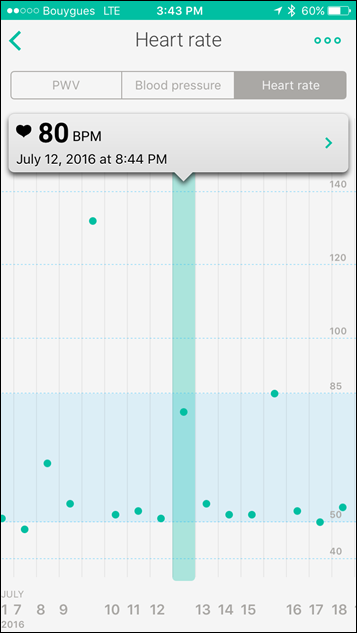
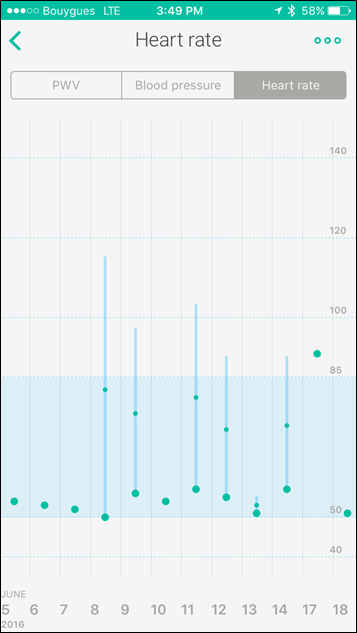

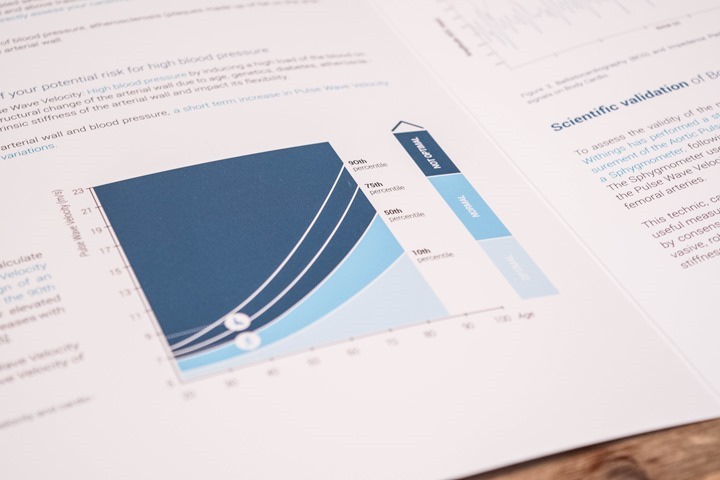


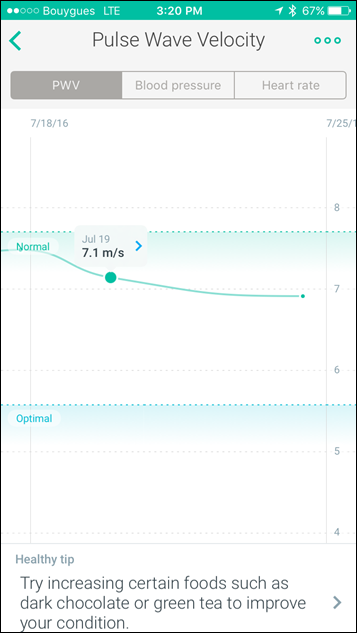

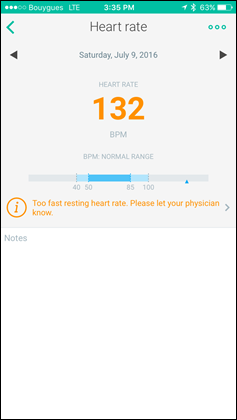
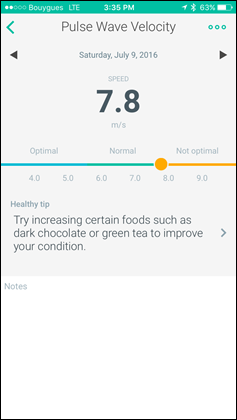

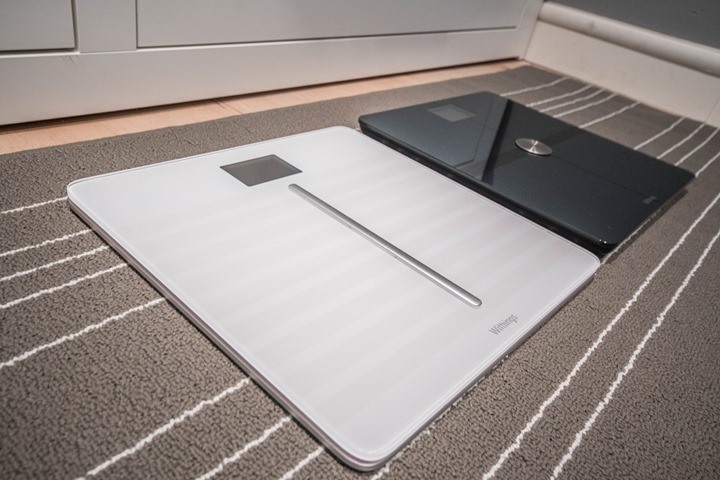
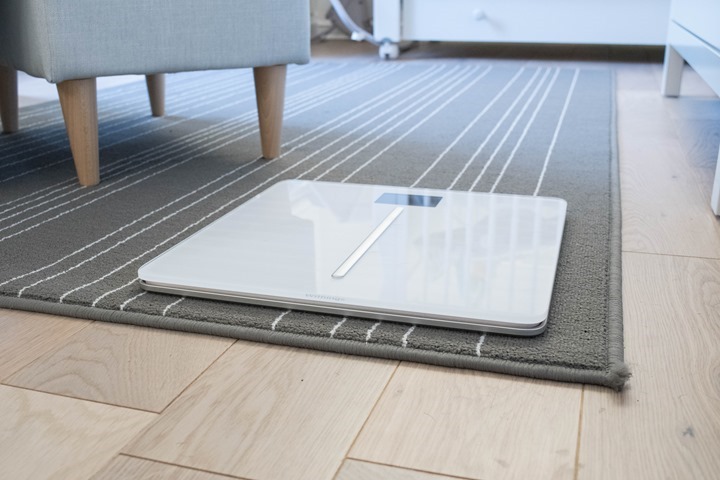
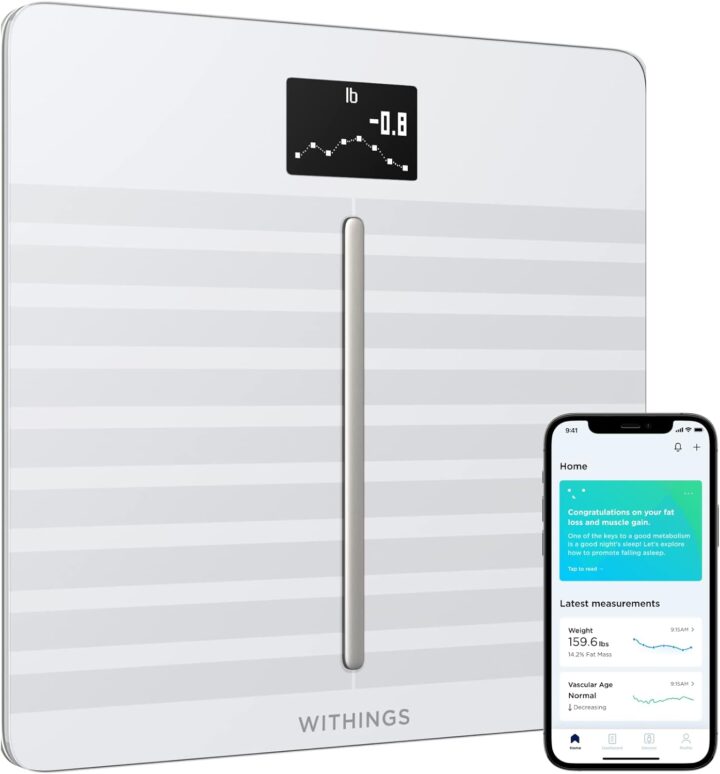



















Damn, How can you sync heart rate from the FR in the withings app? I have a vivosmart HR, my heart data is correctly in apple healt.
I’m trying to do it but I can’t. the only thing my iPhone let me do is sync withings to apple healt, not the other way…
is it because I have the Body (non-Cardio) version of the scale? what I’m missing?!?
thanks!
Ahh…scratch that, I think I know what’s going on. It’s actually pulling the RHR data from the Aura. It had tricked me since some days I wasn’t at home…but The Girl was, so it pulled her RHR data instead. :-/
ok! I had a fragile hope that I could also do that.. nevermind. maybe next time! 😛
thanks!
have a nice day
I’ve had this scale since the day it became available via exclusive sale at the Apple Store. The Pulse Wave Velocity never works for me and the fact that I have two users with very similar weight under my account forces me to have to move while on the scale to indicate which of those two users is weighing in. Pretty disappointed in this technology but I’m mostly annoyed with the “Don’t give up on PWV just yet, keep trying” message that pops up every day on my phone from the Withings App. It like rubs it in my face on a daily basis that the thing does not work. Only reason I bought it because the cleaning lady dropped and broke my good old trusty Withings from 2009.
#firstworldproblems
Is there are gallery missing in the begining?
“Thus, gallery time:
xxxGallery”
There ya go…just added in. Though, you may be disappointed that they aren’t XXX photo galleries… 😉
Have you ever looked into what scales are single frequency vs dual vs multi frequency for electrical impedance calculations?
That you can’t sync weight from Fitbit or Withings to Garmin does suck. And the only company to blame for this is Garmin.
The sync via MyFitnessPal doesn’t seem to work any more either.
“I guess my challenge isn’t so much on whether the metric is right or wrong. It’s just whether it’s useful. For me as someone in reasonably good shape, I just see no value in it. However, if you’re shifting your fitness levels, then it may be a better trend indicator. But it’s just hard for me to see that it’d be any better than simply weight. After all at the end of the day your true weight (and to a lesser degree body fat) is ultimately what’s going to drive whether most of us feel better about our body after doing a bunch of hard work exercising.”
While they have a lot to do with how we feel about our body, weight (and especially body fat percentage) are only indirectly and partially related to actual health. In and of itself, a little bit of body fat is just the normal healthy way developed by evolution to store energy that may be needed later in times of scarcity. Whereas Pulse Wave Velocity, Resting Heart Rate, Recovery Heart Rate, etc, are much better indicators of cardiovascular fitness. Since I assume your high activity levels are fairly constant, I would not expect your PWV to change much as a result of continuing your normal regime. Now, that’s not to say that this particular scale accurately measures PWV (and it certainly doesn’t measure RHR correctly), but it is a completely different kind of health metric.
I did preorder this scale from Clever Training a couple of weeks ago and I see today that they have it in stock so I’m hoping to get it soon. To me the PWV is likely more gimmick than accurate measure, but I like the idea of the thin, no-feet design and the yearly USB charging and I don’t like the dot-matrix readout of the Garmin scale. Those aesthetic features are about as important a few pounds of body fat!
Thanks for the great reviews!
Thanks, Ray, for another great review. Any guess as to when Garmin will update their Garmin Index Smart Scale? We’re getting close to a year but I haven’t seen any signs of a price discount.
I wouldn’t expect anytime soon. We typically see scales have pretty long life cycles. I’d say that the Withings scale makes the Garmin scale slightly overpriced.
But I could see a typical Garmin price tactic of doing a temporary price drop once or twice in the fall or holidays, and then keeping it at $129ish going into 2017. Just my guess.
I got the Garmin scale a few months ago and i kind of regret it. It seems to lose my wifi network every week or so and I have to set it up again. I see on the Garmin forums that other people are having the same problem. Another problem is my weight being reported seems to change if I move the scale to another area.
But at the end of the day I could have just got a cheap non-wifi scale and manually entered my weight in the Garmin connect app. I assume that it would propagate just the same to Strava and Apple Health. I’m not sure the hassles I’ve been having are worth the convenience of wifi sync.
Ray, any advice on whether to use athlete mode on the new body cardio? How do you know which to use?
I would be happy, if you could add some words on their body fat calculation precision compared to others, like Polar scale. I am working out a lot lately and have added a noticeable amount of muscles, but my Withings scale thinks that I have added more fat. It might be true, though I can’t believe it, considering that body weight is up, but clothes have loosened.
I have seen that Withings have different body fat calculation algorithms provided, but they don’t explain much about their difference, except “choose this option, if you are an athlete who is working out six times a week”. I am working out six times a week, but I don’t consider myself as an athlete, because most of the day I am spending in the office.
Unfortunately difference in measurements is very large between different body fat calculation methods they provide, that it is hard to choose.
I still own the first model of a scale, might be that they have improved their algorithm(s). I am looking for a new model and want to take the one, which might be most accurate, though I understand that any of them is far from being accurate.
I have used a Tanita Ironman scale for a number of years and find that you can’t look at fat% in isolation, you also have to consider hydration. I tend around 60% body water 7% body fat (according to the scale). If I am dehydrated and my body water is in the 59% range then the fat% will go up to 8,5%. Conversely, if my water is high (say 61.5%), then my BF% might show around 5%. So I only tend to trust the BF% reading if teh water % is around 60%. Females are typically around 50% water. You will find that with consistent water%, your BF% should be fairly consistent also.
Experienced the same, especially when building chest.
When I went to the control measurement in the gym, there was a great relieve. But on the downhand I stopped using the withings on regular basis since. 🙁
Ray- How well do these scales integrate with Apple’s HealthKit? I’d like to have my measurements sent to Apple’s Health app, but don’t want a Withings account or to have my data stored by Withings. As these devices move more into the health realm and away from fitness, privacy and security are much more important.
If you don’t want a Withings account, don’t buy this scale. Integration with Apple Health is good, but it’s done via the iOS Withings app and a Withings account.
So, is weather displayed only on the Body Cardio? It appears that’s not in the displayed-info sequence for the Body.
Shows up on both scales for me. Double-check that your location is set though, else it won’t show up.
And, WiFi is required too. Weather doesn’t appear to show if it is set up to Sync via bluetooth. One enabled I needed to sync the scale multiple times before the weather would display.
Brendan
Ray,
you need to hire a new model for these photo shoots. The current one has way too much leg hair to be taken seriously as a real cyclist. 🙂
I would have redeemed runner creds though, as it took a few photo shoots to keep my left big toenail out of the frame. Said toenail recently departed.
Had a big fight last year with the wife because of the withings scale!
As you mentioned Ray, when a measurement is a bit off from previous recordings of logged owners, it sends an “unknown measurement” to your phone.
So just picture me at the office getting a 70kg (I weigh 76kg) measurement at 2pm. The wife weighs around 58kg, kids are 7 and 9 years old.
Came home a bit later in a fury: “who the F…. was in the house this afternoon? You’re cheating on me?”
The wife was a bit offended about the accusation, turns out it was the maid !
Ended up creating her an account!!
It’s funny, those ‘errant’ points of ours, we’re not actually sure who they are either. There’s always scales in the DCR Cave bathroom, which is shared with the Cupcakery Studio – so her employees use it as well. Kinda funny.
(We’re happy our staff are focused on health, as two of them have been doing an awesome job lately getting in really good shape.)
Thanks for your review but much more thanks for the older test of accuracy.
Because this older test shows what these scales are: Very expensive crap.
I mean if a scale is for example showing 11.7 instead of 5.9 it is nearly 98% wrong. And even worse: Just changing the setting to athletics mode changes the result to 6.2. WTF?
And at an other testperson with 15.6 it is showing 5.5, which ist 184% wrong.
I think a sheet of paper with the value 9% for athletics and 16% for non-athletics is more accurate than these scales.
I was interested in buying a new scale, because in last summer I did a measurement with a “high quality” scale showing my body fat at 29% while my scale at home was showing 17%. Now I know it is not a “measurement” of the body fat – it is just (random) guessing.
Does either model link to TrainingPeaks? I didn’t see anything under support on TrainingPeaks.
I’m interested to know the answer as well,
also is there away to link it to polar flow
You can link the withings account with TP. Has nothing to do with the scale itself really.
Indeed, in fact there was some change a few weeks ago – so if you had it linked previous to that, you need to re-link it again I believe. The actual ‘previous to that’ point may have been earlier, but it’s a week or three ago that I got the alert from TP saying I needed to re-link.
I still have the WS50 and thinking about upgrading. Any comments on this? The WS50 doesnt show bone/water/muscle mass etc. but not sure if I need that since %Fat and weight seems sufficient to see trends?!
Thanks!
I personally wouldn’t upgrade…but that’s just me.
Am not seen my profile picture but the name sekou jekulamah is my name
I bought the “Body” a few weeks ago. My first expensive scale. We have two cheapish digital scales in the house. Both report similar weights (within ~0.3 kg). And in particular they are highly consistent, e.g. if I step on them a second time I get the same result.
A different experience with the “Body”. If I step on it every minute I get results differing up to 0.7 kg. Round about.
Documentation is pretty poor but I could find out that you shouldn’t step on it twice within 10 seconds. It resets tare after each weighing. So I made sure that I wait more than 10 seconds.
It also puzzles me that it resets tare after each time you move the scale. If this is correct. So it detects movement? I whish documentation was better. What if you keep it below the bed and move it each morning? Should you wait some time?
By the way, I’m 1 kg heavier on the new “Body”. Spent a lot of money for feeling more miserable 🙂
(I know, scales are different, it’s just that my old ones were so consistent. Guess I was lucky)
“Yet on the other hand, they’ve already backed up their claims with a heck of a lot more data than most consumer sports/technology fitness companies do.” OK, but here’s the thing about the plot you show, something that as a physicist bothers me a lot about this kind of thing. Each point here is an actual person, the error bars are apparently negligible (or they would show some), and the line is just “we’re measuring perfectly”. Future measurements of PWV with different people would likely just show a similar spread using the technique Withings is using at the moment. So there are a lot of people (not a majority, but a lot) who are obviously poorly measured by the scale (like you!), so using the scale means a lot of people will get the wrong results and incorrect implications about their health. Better just to not put it in the scale in the first place until the accuracy of the measuring technique is much improved.
I bought the Withings Cardio scale as an upgrade to my Fitbit Aria. Our Aria periodically would show some very inconsistent measurements and it was frustrating my wife. I’ve only had it a few days, so not sure if it will be more consistent or not.
I do like the instant feedback of the weight trend on the scale itself. Once it has a few measurements it displays a graph as well as the delta from the last measurement. I’m not familiar with their older scales, so I am not sure if this is new or not.
Ray – I see sporttracks.mobi can pair with withings. I assume this will pull in weight and %fat? I’m interested in something to give a daily measure and track it into ST. I’m not bothered about the other measures – so would a ws-50 be the best bet?
Scrub that question – rather than being a lazy xxx, I RTFM!
Withings Body is currently on sale for $99 with coupon code BODYLAUNCH @ withings.com
What version of 802.11 do these scales use? That might be a reason to upgrade. That and FSA money at the end of the year for some folks in the USA.
Has anyone else hit issues with this since a software update this week?
My body fat dropped to 7% (from 19%) and my PVV to 5.8 from 6.5. Worse still it has my muscle mass at 122% which means my muscle would weigh more than my entire body weight….
Great write up. I’m a bit confused DC one thing in your review. I’ve had the Body scale for over a year and half and it does give me my heart rate. But in your review you say it doesn’t. Perhaps I’m missing something in that the Body got updated and no longer has heart rate. But that is how my heart rate shows up on my Withings app on my iPhone(see attached picture). The app gets my heart rate from my Body scale.
Indeed, the naming is confusing. You’ve got the Body Analyzer (WS-50), which is different from the Body (just launched in June), and also different than the Body Cardio (also in June).
I had a WS-50 and was confused about the numbering of all the scales. Withings Customer services gave me following names/model numbers for each scale:
Withings Body – WS-45 (WBS05)
Withings Body Cardio – WS-60 (WBS04)
WBS01 refers to the Wi-Fi Body Scale
WBS03 refers to the Wireless Scale – WS-30
WBS02 refers to the Smart Body Analyzer – WS-50
How is the accuracy of the Body with the carpet feet?
What about slightly slanting floor? My bathroom floor slants a little towards the drain – is this likely to causing any problem?
What happens when you need to replace the batteries (on the less expensive models) – do you have to redo the wifi and othet setup procedure?
FWIW:
I use the older Withings Smart Body Analyser and it reliably syncs to myfitnesspal which reliably syncs with Garmin. The data is always up to date.
Dennis
Two more questions:
1. Is there an open API that you can use from your own programs to retrieve data or in other ways interact with the scale?
2. Have you seen any issues with the scale loosing connectivity with Wifi and one having to redo setup again etc? Some other scales seems to have this type of problems according to reviews…
1) Yes, they have a pretty open API
2) Nope, I haven’t in my case. I wonder if it’s due to a certain WiFi router/protocal/etc… that’s causing that?
We both have Garmin activity trackers in our house – Would you suggest we stick with a Garmin scale also? Or can we use the Withings ? Will it sync up with the Garmin Connect IQ ?
Thanks for your excellent Reviews and all the best with Baby!
Have any of these products made a claim to how accurate the body fat % is?
I have used early models of body fat scales in the past and they jumped 5-10% a day.
cheers
M
For what it’s worth, I’ve been using the Body Cardio scale for about 30 days now. Overall, I’m happy with the performance. It’s been stable on the Wifi connection and the app has been hassle-free. One trouble spot for me was getting the Pulse Wave Velocity to read. A trick I stumbled on is to dampen the bottom of your feet with water prior to getting on the scale. I’m not sure if that helps the scale connect with the electrical energy in our bodies, but ever since I’ve done it, the scale reads PWV….without doing it, I’m 50:50 at best.
Also, I’ve seen someone ask about the accuracy of the Body Fat…mine jumps around 5-10 points on any given day. I haven’t identified the cause, but it is not very stable. I’m hoping the avg over a number of days gives me a directional reading of whether I’m getting leaner.
ScottW, I too have seen some flakiness with the pulse wave. What I have seen work is to give it a partial step before stepping on it fully (let it go up to 20 – 40 lbs bounce down a little and then step fully). I was thinking it was taking a few extended seconds to connect to the network because whenever I weighed a second time it would work.
I also found foot placement matters. The manual does show placing your heals on the third ‘line’ pattern from the back.
I would not advise using damp feet as this would impact the fat reading.
Here’s another quick update on the scale. I’m still using it daily and overall it works well with the exception of measuring my pulse…it’s still hit and miss. I’ve tried different placements on the scale and that doesn’t seem to work. The only thing that increases the chance of getting a reading is dampening the bottom of my feet. As Brendan O states this isn’t advised, but if I want to get a reading that’s what I have to do.
Also, as the review states the resting pulse rate isn’t accurate. If I compare my resting pulse rate before getting out of bed in the morning (50-54 bpm range) to the measure after getting out of bed and walking to the scale (60-65 bpm) it’s quite a bit different. This isn’t a big deal for me given I know where my resting heart rate should be.
Lastly, everything else with the scale is working as described in the review. It’s stayed connected to the Wifi, gives the simple temperature/weather forecast for the day and shows other body metrics. From that stand-point, it’s hassle free. I’m glad I purchased the scale. It’s nice to get your weight and have it logged on an easy to use mobile app for review after you actually wake up later in the morning!
Hi DCR,
After reading your review, sorry, but I didn’t understand if I buy this scale I will be able to sync it with Polar Flow, since I run and swim with V800 and H7 from Polar.
What would I miss, comparing with Body Cardio from Withings, if I go to Polar Balance scale?
thank you for your time.
regards
Steve
No, unfortunately not at this time. Two separate ecosystems with no method that I’m aware of to get between them. 🙁
Took delivery of a Withings Body today (using the DCR amazon referral…).
Generally happy, but percentage body fat seems way off. It’s reading about 8%, but a quick Google and picture comparison suggests I’m more in the 12-14% area. Will the scale ‘learn’ over time and improve in accuracy, or is it just a case of it being consistently inaccurate and therefore I should monitor change rather than the absolute value?
My muscle mass is being displayed on the app in pounds even though in settings on the app I have ticked Body Composition in %. The other metrics like body fat are being displayed as a % but not muscle or bone. Any ideas anyone?
I am using the IOS app and am not having this problem. Note however that the settings are device dependent. The mobile app settings relate to what is displayed on the mobile app and the Web app settings control what is displayed there.
A long-time happy user of the original Withings Wi-Fi Body Scale (WBS01), I was pleased to add the Body Cardio to my scale collection. I knew that the PWV measurements were of questionable accuracy or value. Having used the WBS50 for a few years, I also did not expect the fat mass measurement to be useful for much more than tracking trends. I was looking forward to the sleeker form factor of the new scale.
What I did not expect was a reduction in functionality compared with my three year old scale. I set up the Body Cardio three days ago. It has taken several attempts to get the scale to take body composition measurements or heart measurements. This problem seems to get worse every morning. This morning, after nine unsuccessful attempts to measure either body composition OR heart data, I scored on both counts only after wetting the bottoms of both feet. If this is a requirement, it is—in my opinion—an absurd one.
During this long run of unsuccessful measurements on the Cardio, I weighed in twice on the WBS01 which gave me weight and body fat measurements both times. This scale has always worked reliably.
As an aside, on 9-8-16 the WBS01 gave me a weight of 145.6 lbs. and fat mass of 24.3 lbs. (16.7% ). That same morning, a DXA scan reported 9,971 grams of fat on a 67.1kg weight (14.9%) and a seca mBCA analysis which measured 22.68 pounds of fat against a total weight of 146.94 pounds (15.4%). It would seem that the WBS01 was not too far off and that even clinical grade measuring devices can disagree with each other.
Today, I am five pounds heavier than I was in September. The WBS01 is reporting 28½ pounds of fat which is probably a little high but believable. The Body Cardio is reporting 27.4 pounds of fat which is in the same ballpark. Both numbers are probably pretty close to spot on. All measurements were taken in non-athlete mode.
Ray
Do you know of any way to get data from Wahoo Wellness to Garmin Connect, My Fitness Pal or Apple Health?
At one time it looked like I was able to send the data to My Fitness Pal, but even that connection appears to be gone.
I love everything about the scale except that the data seems to be on an island. Any help you could provide would be appreciated.
Eek. Unfortunately I haven’t used that scale in quite some time, in large part because connectivity was so limited. 🙁
FYI- just picked up the Body version for $77 on Clevertraining. Big discounts on all their weight scales.
Withings is having a sale on the Body Cardio until Sunday the 15th for $107. That price matches what you can get the black version for on other sites, but on those the white is still full price.
Good deal on this at the moment via Withings for the UK/Ireland at least.
link to withings.com
This comes to £89.95. Add it to the basket and it reduces to £39.95. Put in the code: WITH-HEALTH-62YKM3 for another 20% off reducing it to £31.96. They then provide free shipping!
I bought the Withings Body Scale. Configuration went find, but after some time there was an icon showing there was no wifi connection anymore. I tried configuring the scale with the iPhone (via bluetooth), it was a pain to connect. Finally I managed to get int othe settings and configure the wifi again. It turned out that by re-configuring the scales, all unsynced data of me and my family members was lost. What makes me furious is that after contact with Withings support, it turned out the problem was just the battery level. Apparently 40% battery level is not enough to support the wifi signal. If they would have a clear icon indicating this, I would have simply changed the batteries, instead of going through the whole re-configuration and losing all my unsynced data.
Thank you for your review Ray.
Since its been a while since you wrote it, both scales are within £20 (on amazon.co.uk through your link!)
Do you know whether the Body Cardio scale can be setup to behave like the Body and not collect or record PWV or Heart rate ?
I.e. If I am not interested in those measurements but prefer the aesthetics (or feet) or the Cardio, will I be forced to wait for erroneous readings that I am not interested in, or can I just deselect them in setup ?
Thanks
Thank you for the informative and detailed review.
My question is Mr. Rainmaker, what are your thoughts on the bone mass, water percentage and muscle mass metrics in regards to accuracy/precision?
I agree w/”Lars” below, in that they are closely correlated to the body fat percentage and could, for the most part, be relegated to the data bank. Although depending on the degree of accuracy and/or precision, I would find it useful in regards to progress/regress.
Many thanks in advance!
I’m kinda mixed on those stats. Mostly because I don’t have much to compare to in terms of other data points from other technology types that can validate those. 🙁
Thanks for the thorough review.
How does this scale read workout data from other activity trackers that sync with Apple Healthkit? For example, let’s say that I had a quick 30 min swimming session and burnt 300 calories. Apple Healthkit would save that as Active Energy and log it as a workout. Would the Withings scale and app recognise this workout and read calories burnt?
I ask this because in their app the read data includes Heart Rate and Steps only! Which got me confused a bit before buying this.
This review should be updated since Nokia has purchased Withings and totally screwed up the web dashboard and mobile app to the point that you can’t really track your measures any more, which really diminishes the usefulness of the scale.
Does the Withings mobile app (android) still work properly or are we being forced to use the Nokia Health app?
Yeah, I’m travelling this week, but when I get back next week I’m going to tally up what’s broken/changed and see what course needs plotting.
If you have any screenshots/etc of the web app, please include those changes as well, as it was also monumentally changed with reduced functionality.
I’m not sure how this one was botched so bad.
Hello, it would be great if you can update your review with the Nokia additions (or subtractions). Please? 🙂
I’m confused by the calculation Withings scale uses. Online sources show similar tables where athletes have +40% muscle mass. But Withings show a value between 60-80 as normal.
Withings Body composition model is : Fat mass + Bone mass + Muscle mass = 100%
Do they use a different algorithm to worldwide muscle mass and body composition measurements?
The muscle mass on my app says 9 stone 6 pounds. Just wrong.I’m only 12 at 9. I’m 21% fat, 37llbs, leaving roughly 10 st I’m all fat and muscle.
Since Withings is now Nokia, I was wondering how does this affect potential buyers of this scale. Is it still supported by the Manufacturer? Does it still synch to some app/websites?
I have a Withings scale. I loved it. Until Nokia came and messed everything up.
Currently, I would categorize both the web app and the phone app as unusable. Yes, somewhere in there is your data – if you jump through some hoops to get everything working again. But gone is the nice dashboard, the meaningful graphs, the “congratulations on hitting a new low weight” notifications, the clean, usable interface.
So I have a working Withing scale that was not cheap. But I am seriously considering to just throw it away and spend more money to buy a Garmin scale. That’s how bad the Nokia take-over is… I would strongly suggest to not buy Withings/Nokia at this point until we know if they fix it or not.
Ray, any update on your view since Nokia changed the whole interface. I have recently bought the scale so I have only used it with the Nokia interface, which doens’t look great and a lot of the nice data/graphs you show don’t seem to be available. Any idea if there is a strategy to “dumb down” the product, hiding the most technical data?
Also, I was wondering if you had more information about the way the HR is measured with this scale? Is it also through electric impedance as well? Unfortunately, can’t find any details on this.
Many thanks
As of 10/28/17 the app is still a mess. E.g., in the weight graph there’s a pop-up that shows any single measurement you select. My current weight shows as 173.6 lbs, which is correct…however the axis on the right side of graph shows values that are roughly double, between 374.8 to 396.8 for that measurement. Multiply my weight by 2.2: 173.6 x 2.2 = 381.92. Best guess, the conversion to display kilograms as pounds on the axis is being applied twice. FYI, it’s been that way for over a month.
Another example, in the online app the weights in the weight table are correct but the corresponding dates are wrong. Really a shame. Nokia has completely screwed up Withings and despite apologizing months ago has made very little progress toward fixing anything.
Any difference between these and the Nokia variants? In particular software and connection to 3rd party sites?
They withdrawn the whole Pulse Velocity measurement (they have found out that the way they implemnted it does not really work) from the scale making it meaningless to buy it ie you can buy a basic model instead.
The ad that shows below this thread is for the Nokia Body+ scale discounted to $79…. which takes you to a page where it is being sold for $99. Nokia is a hot mess.
Got an email today from Nokia describing this issue and offering customers to return the scale and get a refund. I have never quite trusted this metric but I find the accuracy of the body fat readings to be very poor (very large swings from one day to another and even between two consecutive measurements). So I will take their offer and hope to get something more accurate (anyone has experiences with Tanita scales ? ).
Where did you read that Nokia believes the PWV doesn’t work?
link to support.health.nokia.com
“Why was the Pulse Wave Velocity feature removed?
We brought the Pulse Wave Velocity (PWV) feature to a home scale for the first time with Body Cardio. We are now learning its capabilities in the area of measurement of pulse wave velocity may require a different level of regulatory approval. In light of this, the decision was made to turn off the pulse wave velocity feature. This action does not affect the other features delivered by our most advanced scale – such as weight accuracy, body composition, and heart rate readings.”
Indicates nothing of the sort.
I’m not that upset. PVM hasn’t been able to read most of the time lately, and since I can now return it for a full refund, I can buy a Body+ that does everything a Body Cardio does (except HR) and I save $100 CAD.
I encourage others to also return the scale and buy the cheaper Body+ version, saving themselves money in the process.
(Sorry for my english) The matter is not whether pvw it’s reliable or not : i (and you too, i suppose) buyed that scale and paid for that feature, stop!! You didn’t stipulate a rental contract, the device ownership IS YOUR, but NOKIA, like it or not , enter in your house and pull away some gear from your (your!) device. This is the crime !
Ok, the app “health mate” is a window on a Nokia server so i accept that they show the data they want to, but the hardware is a whole different story, it’s a private proprety ! So if Nokia suddenly wake up and realize they have to pay some more taxes for sell their jewels they just have to do it or calls four advocates to fixing the problem.
I know, problably they wrote on the user agreement in microscopical character (that nobody never read) some sorta of rules that grant them some kind of right doing thing like this, But this is a legalized crime! What is sold is sold. stop!
I dindn’t still decide if keep hope they solve the problem and enabling back PWV or ask for a refounding, but this story shows me how the times are changing: Devices we buy keep an ombelical cord whit their factory and the big brother can decide whether to push a button and to modify your gadget, enabling or disabling according to their needs what you just paid for. So in a near future, your brighting new car could suddenly became slower than what was on the first rides, cause Mr.Ford have just realize that speed limits in your country didn’t match your teorical full speed (doesn’t matter if you never exced the limits, the control on your stuff is no longer your !).
Nest (Google) to buy Nokia Health before end of month according to Le Figaro…
Hi,
We have a Withings Scale model WBS05 at home (I think it is the Withings Body Scale, but it says WBS05 on it). This is researched and bought by my boyfriend and now that we are getting married he is wishing for an activity tracker that tracks heart rate, has GPS etc AND can connect with the app of our Withings scale.
He mentioned that it would be either Garmin or Polar but he couldnt remember which one, and I do not want to ask him for more details as that would spoil the surprise. However, Im simply not able to find out, so I thought maybe you could help with a bit of info?
Would be highly appreciated 🙂
P.s. we are living in Denmark and wedding is end of august.
The Smart Scale with Body composition is on sale at the moment (in the UK at least). It’s now £79.95 rather than £129.95 in case anyone is interested.
Considering updating my now pretty old withings scale…
I have a withings scale, and I used to sync my weight from Withings to MyFitnessPal to Garmin Connect.
But that pipeline seems broken now (and I don’t trust MyFitnessPal after their leak).
So I built a standalone service, it syncs all the fancy weight metrics (weight, body fat %, body water %, skeletal muscle mass, and bone mass) from withings to garmin connect. I think I’ll probably add syncing to strava soon too if there is demand for it.
Anyways, I figured I’d share it here in case anyone is interested.
https://smartscalesync.com
I added support for syncing weight measurements to TrainerRoad and Strava.
Awesome – thanks
….. But just checked your pricing and its pretty steep! Compared to services like tapiriik.
Yeah, I suppose it’s not for everyone. Part of what you are paying for is a background in enterprise security.
For example, I just looked at tapiriik and the credential collection forms seem to be vulnerable to the attacks described here: link to hackernoon.com.
Out of curiosity – have you applied for the Garmin API program? That would eliminate the need to store a users credentials for the Garmin platform.
No I haven’t but I did look there first and saw API access cost $5000.
I can send them an email to see if that number is negotiable but my guess is they have that threshold for a reason (to avoid dealing with small fish).
Yep – I get the security issues (day job is IT Security in one form or another). But, sadly, 99% of people either don’t care, don’t understand, or don’t care enough to pay.
Yeah, I’ve long argued that Garmin should offer free API access. After all, it’s the customers data.
They actually do offer free coupons to the API, if you attend the Garmin Connect Summit for example or also usually if you take one of the CIQ sessions at the ANT+ Symposium.
And frankly, their bigger partners don’t pay anyway, as you guessed.
Still, on the flip-side I know their argument: Which is that you’re making money off their platform (which is true), and thus, can pay the support/etc side of that.
That’s great to know about the free coupons, I’ve been wanting to attend ANT+.
If I make anywhere close to $5000 I’d for sure consider paying for API access, but at the moment the project (like most of my side projects hah) is a time sink and net financial loss.
But it was a great excuse to play with a serverless stack (link to techcrunch.com), and I’m quite happy with how things turned out.
I added Fitbit support, which opens the door for using any scale that syncs to Fitbit to send your weight/body fat data to Garmin Connect.
There’s a number of cheaper scales on amazon (renpho/eufy/fitindex/greatergoods) that sync to Fitbit so this might be a solid option.
I’ve heard positive things about the renpho scale within the TrainerRoad forums.
So I recently added support for Garmin Index Scales to Smart Scale Sync. The connection is API based. Unfortunately the API doesn’t support weight uploads, so if you want to sync weight into garmin you still need to hand over your credentials. But if you want to sync weight from your Garmin Index scale to Strava/Fitbit it can be purely via API. If you want to send it to TrainerRoad/Concept2/Peloton/Polar Flow, you need to provide credentials for those services as they do not have APIs.
I have to say that no one does an honest and total review as you. If I’m looking to buy tech I check out DC Rainmaker. I think what you often prove is most things are fitted with stuff we want , tech we actually don’t really need but simply have to get ?♂️. From your reviews I’ve purchased stuff like Go pro , Garmin VIRB , 1030 , Varia , Wahoo kicker etc etc. Next will be scales and then the kicker Bike. A friend recommended the Tacx bike , but your review convinced me to wait for U.K release of the Wahoo. I sincerely hope these companies appreciate how much business you get them. Keep up your amazing work.
Roger
I have the Body Cardio scale but don’t know how to get PWV? Help?
Oh my God, this is actually hilarious!
I ‘m a longtime user of Withings Smart Body Analyzer (aka WS-50) from which i m very happy, and since i have almost 10 years of log 6 -from when i purchased it + 4 years before that i have added manually, i wanted to upgrade to more input BONE MASS PERCENTAGE, MUSCLE MASS etc.
So even that i m also a Garmin user i purchased a WITHINGS/NOKIA HEALTH BODY CARDIO WIFI SCALE some months ago in sale for 49€, which is still in the box waiting for the batteries of the WS-50 to run off, and while i was looking for ways to sync also with Garmin and Strava accounts i bumbed in to the comments section here saying that the Pulse Wave Velocity well advertised revolutionary feature has already been omitted from the app and web interface!
Facepalm, sigh… the feeling is priceless!
Hi I think you have made a mistake where the base model Body Wifi doesn’t have muscle mass and bone mass. I checked the purchase link for the base model which shows the WBS-06 doesn’t come with these features.
I purchased the WBS-06 for considerably less only to find out those features missing. Do you still recommend the base model over the Body+ and Body Cardio? The base model I purchased only has weight and BMI.
Once again thanks a lot for sharing; by the way although I am a regular here I’ve just noticed the scales reviews section. Nice 😊
Withings is about to release their new flagship scale (link to withings.com) and as a data junkie I am very much interested to see whether you will be doing an in-depth review of this new toy @Ray. The segmental body composition is a nice play from Withings.
Looking forward to your review; fingers crossed.
A review of Withings Body Scan would be very appreciated 👍
€ 399.95? Seriously?